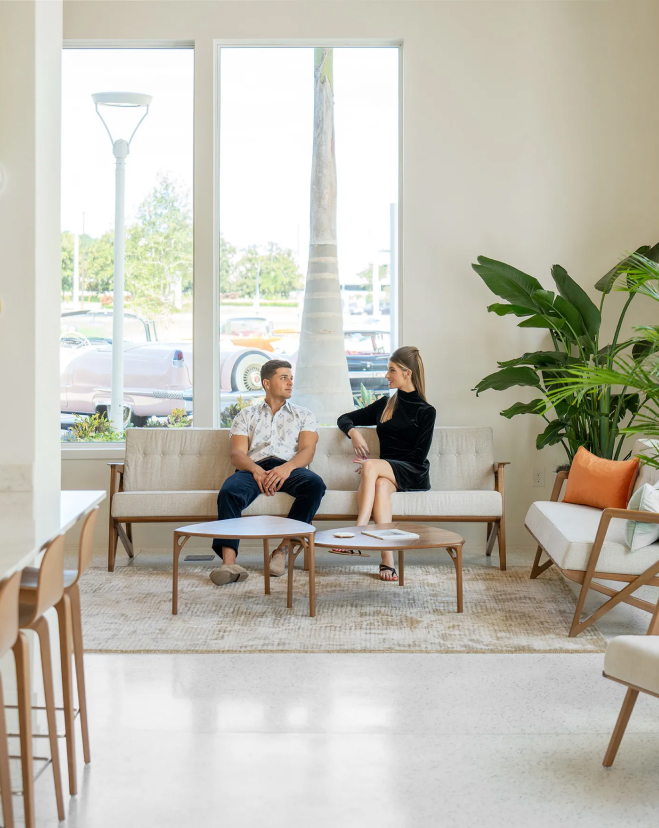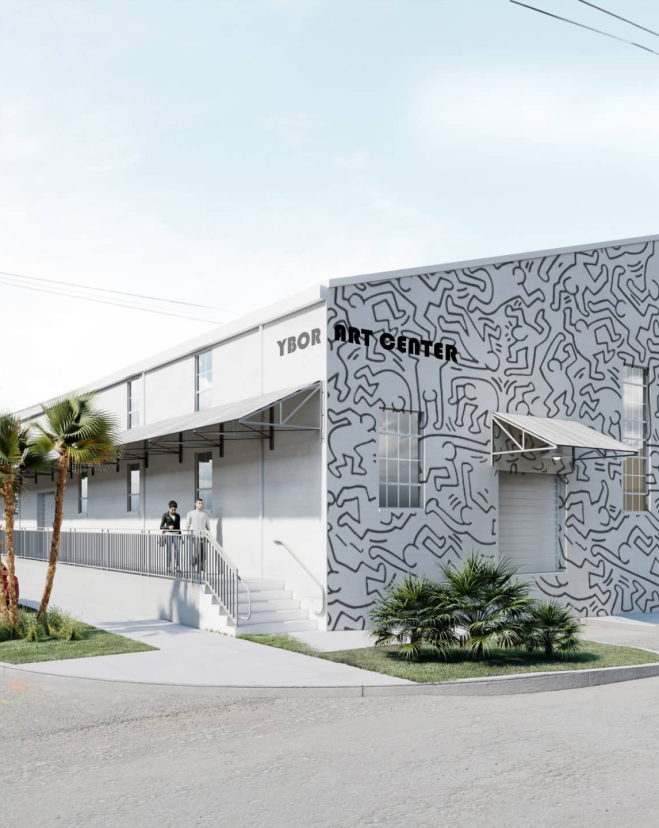A multi-family apartment building in Florida breaks all the rules for what common areas should look when its architect-design team, who are husband and wife, take a holistic approach.
Iconic mid-century architect Gene Leedy provided major inspiration for Jessie Shell’s love of modern design. Her husband Fadi Garcia, a Cuban immigrant whose primary influence for becoming an architect was Havana’s modern movement, shares her ideals of the built environment. Together they’ve embraced holistic design, which is to connect architecture and design.
Their philosophy is to make architecture “of its place”: influenced by the building’s site, climate, and environment. At Sur Club that meant creating functional, comfortable gathering places in expansive, light-filled spaces. In true mid-century style, finding good synergy between the amenity spaces and the courtyard itself.
Working within the developer’s standard project budget, the team looked for timeless, beautiful furniture. “With all that light, we didn’t want to ground the floor too much,” Shell reflected. “That’s when we came across Sossego. One of the great things about the pieces is they are very light. And they offered a broad range of furniture to help create inviting spaces.”
The couple was also sold on the selection and authentic materials Sossego offered: real leather and warm Brazilian wood that contrasted with the space itself. A curvy Domingos Tortorà Frisos Disk that undulates with light. The ropes on the Giselle chair that mimic vertical design features the couple created. And the Ylla bench, with curves that suggest a canoe moving through water. “Our client was just blown away,” Shell recalls. “People come into the building just to look at the amenity spaces, and the apartments have filled up fast. We hope to keep raising the bar. Good design really sells.”

